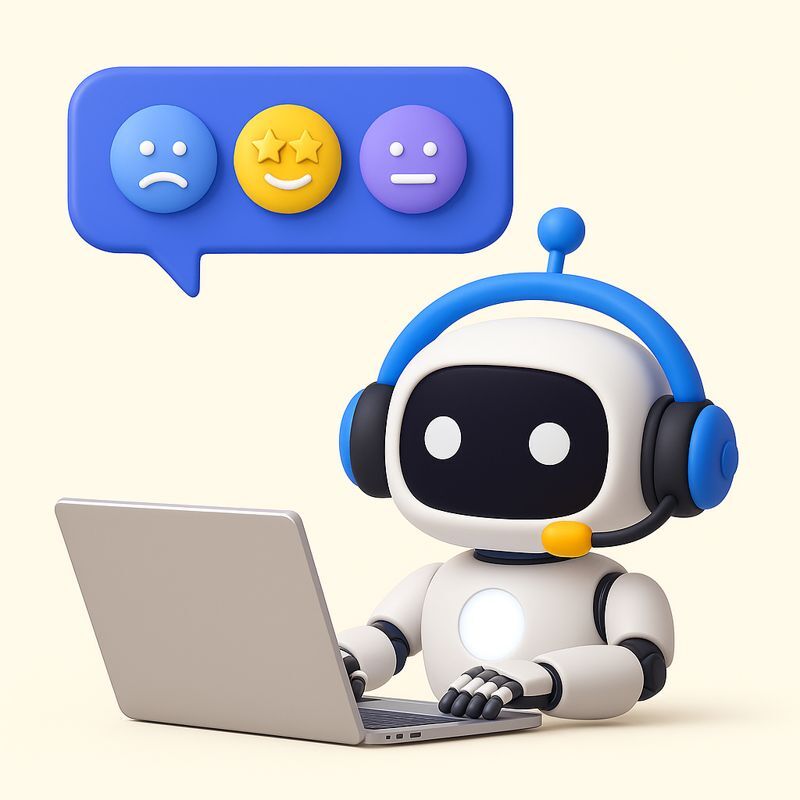When customers start using your product or service, you can expect them to have questions or run into issues.
In fact, service issues make up 52 % of customer complaints, while 31.4 % of customers complain about products they’ve used. The remaining 16.6% of customers complain about company policies. (source)*
While having complaints is normal, it’s essential to quickly and efficiently tackle them.
And hopefully, avoid making the same mistakes again.
So, how do you ensure you deliver great customer service every time?
- Understand which mistakes to avoid.
- Follow best practices to help avoid them.
Read on as we discuss 10 examples of bad customer service and learn how to prevent them.
Table of Contents
- Good VS Bad Customer Service: What’s the difference?
- 10 Examples of Poor Customer Service and How to Fix Them
- Wrapping up
Good VS Bad Customer Service: What’s the difference?
If you’re wondering how good customer service differs from bad customer service?
Here’s a quick overview to help you understand:
| Aspect | Bad Customer Service | Good Customer Service |
|---|---|---|
| Response Time | Slow or delayed responses | Prompt and timely responses. |
| Problem-Solving | Ineffective or incomplete solutions | Effective and efficient problem resolution. |
| Communication | Unclear, unprofessional, or impolite communication | Clear, professional, and polite communication. |
| Quality of support staff | Inadequate training. Lack of product/service knowledge. | Well-trained. Deep understanding of product or service. |
| Empathy | Lack of empathy or understanding for customer needs | Empathetic and personalized approach to solving customer issues. |
| Customer Feedback | Ignoring or dismissing customer feedback | Acting on customer feedback to improve service. |
| Availability | Limited availability or difficult access to customer service | Easy and convenient access to customer service. |
Now that you can differentiate good customer service from bad, it’s time to examine some instances of bad customer service and ways to avoid them.
10 Examples of Poor Customer Service and How to Fix Them
1. Long wait time on calls
Hiver’s State of Customer Support Report found that 3 out of 4 customers get frustrated by long call waiting times.
This happens typically when support staff are unsure how to respond to customers or how to determine the solution.
How to fix this?
Implement a call-back system: Many companies offer a call-back system, so customers don’t have to wait in line forever. For instance, a customer seeking technical support can be given the option to request a callback at a convenient time rather than waiting in a long queue.
Offer self-service options: Redirect customers to a knowledge base or FAQ section. This approach frees the customer service team from solving similar queries repeatedly and helps them dedicate time to more complex problems. Self-service tools can be especially useful if you’re a small business running support operations with a lean team.

2. Multiple call transfers between agents
Have you seen it happen where one of your customers is handed off from one support staff to another to another?

This can be incredibly frustrating.
Frequent call transfers suggest that agents are unsure who handles what on their team.
It also shows a lack of understanding of the customer’s issue or the company’s products, services, and policies.
How to fix this?
Implement skill-based routing: Agents need to be firstly categorized based on their skills – technical expertise, language proficiency, and product knowledge. Then, you can direct customer queries to the most suitable support staff. This is called skill-based routing (hyperlink to automations page). You can use a tool like Hiver to implement this. Customer queries can be routed to specific agents based on certain triggers – keywords in subject lines, from address, and more.
Use a knowledge management system: Equip your agents with the necessary resources to provide prompt and accurate support. Invest in a user-friendly knowledge management system that offers easy access to product information, troubleshooting guides, and company policies. This will make your team readily available with knowledge and minimize handoffs.
3. Asking customers to repeat themselves
Do you know what frustrates customers the most? Having to repeat themselves.
We found that 38% of customers find it annoying to repeat themselves when contacting customer support.

~ a frustrating customer ranting on X
One reason customers have to repeat themselves is that customer information—with complete context—is not shared or logged in the system, resulting in agents repeatedly asking for details.
As a result, customers could receive conflicting information from different support representatives.
How to fix this?
Centralize information using a common inbox: Use a shared inbox solution that centralizes all information and improves transparency. Shared inboxes can enhance your support operations by giving complete visibility into tickets. They also enable you to assign tasks, prioritize, mark statuses, and leave comments on tickets. Everyone on the team can see the status of conversations, reducing collisions and ensuring no customer queries are missed.
Have all the necessary information beforehand: When the customer explains their issue, you should be able to collect all relevant information about them. This is where integrating your helpdesk with other business software comes in handy. For example, integrating your helpdesk with your CRM makes it easier to pull relevant customer information without switching back and forth between several tools.
Use call recording tools: Using conversation intelligence or call recording tools like Chorus.ai, you can identify why customers must repeat themselves.
4. Lack of empathy when talking to customers
If your support staff treats customer issues as just tickets, it points to a fundamental problem: lack of empathy.
“The most important customer service skill is empathy. When our customers are experiencing issues they are usually coming to us with some amount of frustration or anxiety. Being able to authentically acknowledge those elevated emotions helps customers feel seen and heard, which not only paves the way forward for a resolution (you can’t help someone who is emotionally elevated), but helps establish a human connection.” – Justin Bonar-Bridges, Customer Support Technician Level II, Verisk Property Estimating Solutions (Xactware).
In fact, post-pandemic, 21% of customers expect support agents to be more empathetic.
Without empathy, customers lose trust in the company’s ability to understand and address their needs effectively. This can hurt your relationship with your customers.
How to fix this?
Train your team to be more empathetic. Inculcating empathy in your team is the first step to ensuring that your customers feel heard. Train your existing team to be mindful of their language. Using phrases like “I completely understand” and “I know where you’re coming from” shows that you pay attention and acknowledge what the customer says.
Phrases that make you sound more empathetic
– “I understand how frustrating this must be for you.”
– “I’m sorry to hear that you’re experiencing this issue. Let’s see how we can resolve it.”
– “I can see why this would be upsetting. Let me help you with that.”
– “Thank you for bringing this to our attention. We’re committed to making this right for you.”
– “I appreciate your patience while we work through this.”
– “I would feel the same way in your situation. Let’s get this sorted out.”
Remove biases: Recognize and address biases—age, gender, language, or occupation—that affect how support agents interact with customers. For example, your support staff may believe old customers aren’t usually tech-savvy. Biases can create barriers, hindering agents from strongly connecting with customers and leading to negative experiences.
Actively listen: Frustrated customers crave empathy, not a quick fix. Focus on active listening before jumping to solutions. By asking open-ended questions like “Can you tell me more about what happened?” and demonstrating genuine interest, you validate their feelings and show them they’re valued.

5. Lack of flexibility
In certain situations, customers expect personalized solutions to their problems. They may feel undervalued and dissatisfied if they receive generic responses or are told nothing can be done.
For example, just this morning, a pickup guy came to collect the bag I had requested to return.
I was returning it because the bag I received looked nothing like the one I had ordered.
He refused to authorize the return without approval from the upper management, saying it looked different.
Which was precisely the reason why I was returning it ? .
This is why customers get annoyed. Rigid policies can negatively affect the quality of your service.
How to fix this?
Give more autonomy to your support staff: Without autonomy, customer service reps can’t make decisions or handle issues. Empowering support staff ensures they have the ability and autonomy to make decisions without seeking multiple approvals. This, in turn, improves the time taken to resolve queries.
Relax policies, wherever possible: Relax your company policies for prompt response and action. If they are too rigid, customer service representatives may be limited in providing personalized solutions to customers.
Here’s a little story to inspire you:
One customer, whose mother’s left foot was numb and sensitive to pressure due to recent medical treatment, bought six pairs of shoes for her, hoping one would work. However, after receiving the orders, the mother called Zappos to explain her medical condition and ask how to return the shoes.
Two days later, a large bouquet from Zappos was delivered to her doorstep, and it was delivered with a sweet get-well-soon message. Two days after that, the customer, her mother, and even her sister were given VIP memberships, allowing them to ship all orders without charges. (source)
6. Support isn’t easily reachable
Customers want to reach you easily. But keeping your contact information at the bottom of a page or making customers go through multiple steps to get support can be very frustrating.
How to fix this?
Improve visibility: Placing customer support options in prominent locations, such as the header, footer, or a fixed position on the side of the page, ensures that customers can easily find help without having to search extensively. For example, you can use the “Contact Us” button in your website’s top navigation bar. It’s one of the first things your customers would notice.
Here’s a good customer service example. One of the leading retail brands, Zappos, places its customer service contact details at the top of all its web pages so that people can contact their support easily.

Be where your customers are: Allow customers to reach you anywhere and anytime through their preferred communication channel. A multi-channel helpdesk can help, as customers can contact you by phone, email, chat, social media, or WhatsApp.
Ensure staffing for all support channels is done correctly: Different channels (phone, email, chat, social media) have different response time expectations and workflow requirements. Understand the nuances of each to allocate appropriate resources. For example, live chat may require our support staff to possess on-the-feet thinking skills, while phone support may require strong verbal communication skills.
7. Complicated IVR systems
Have you ever tried calling your bank and been able to talk to an actual support rep directly?
If you’re anything like me, you probably had to navigate through a series of robotic voices and push buttons before reaching a support agent.
Those robotic voices are automated phone prompts or Interactive Voice Response (IVR) systems. Phone prompts are pre-recorded or dynamically generated messages that guide callers through a menu of options using their phone’s keypad or voice commands.
But sometimes, customers find it hard to remember and navigate several options, leading to repeated attempts and increased frustration.
How to fix this?
Offer repeat prompts: Give callers the option to replay the menu if they miss something or need more time to decide.
Keep it short and sweet: Limit the number of options in the main menu to 3-4 items. Prioritize the most frequently chosen options first.
Direct Key Entry: Offer an option to enter department extensions directly using the keypad, bypassing the menu altogether.
8. Missing Follow-Ups
When your business fails to follow up with customers after offering a solution or fix, it could appear lethargic.
Not only that, but the lack of follow-up leaves customers unsure of the next steps or whether their concerns are even being addressed. This builds frustration and makes them feel unimportant.
Imagine Sarah contacts her internet service provider (ISP) about slow internet speeds. After explaining the problem to a customer service representative (CSR), Sarah is assured a technician will be scheduled to investigate. The CSR promises to follow up with Sarah via email within 24 hours to confirm the appointment time.
Two days pass, and Sarah receives no email. She calls the ISP again, frustrated that her issue remains unresolved and her time wasn’t valued. This could have been avoided with a simple email confirmation, allowing Sarah to plan for the technician visit and fostering a sense that her concern is being addressed.
How to fix this?
Make it easy for your support staff to follow up: Create clear guidelines for what information should be included in follow-up communication (e.g., next steps, timelines, contact details). You can also include email templates that your support staff can use to ensure consistent information.
Use automated reminders: Use tools that integrate with various calendar apps like Google Calendar. For example, Hiver can trigger follow-up emails or calls at designated times after an initial interaction.
Recommended Read: 7 Help Desk Automations Every Business Needs to Know
9. Hidden fees or charges
When customers do not receive precise product details, prices, and terms, they cannot make well-informed choices. This can lead to feelings of regret and potential product returns.
For example, a customer finds a seemingly affordable flight and proceeds to book it.
However, during checkout, they discover additional fees for checked luggage, carry-on bags, seat selection, and even printing a boarding pass at the airport.
What initially appeared as a budget-friendly flight cost significantly more than anticipated.
How to Fix This?
Clearly breakdown pricing: Display the total price upfront, including all mandatory fees and taxes. Differentiate between compulsory fees and optional add-ons like priority boarding or in-flight meals.
Provide an interactive fee estimator: Offer a tool that allows customers to calculate the final cost—for example, based on their baggage needs, seat selection, etc.
Add prominent fee disclosures: Highlight any additional fees throughout the booking process, not just at checkout. Use bold text or pop-up notifications to ensure customers don’t miss them.
10. Ignoring Feedback
Customer feedback gives you direct insights into what works well and what needs improvement in your products or services.
This information is crucial for improving things to serve customers’ wants and needs better.
When businesses pay attention to feedback, they will likely take advantage of the opportunity to understand why customers leave, leading to higher churn rates. In fact, 72% of customers plan to switch to another brand after a negative support experience. (Hiver Study 22)
This means unhappy customers will go to other businesses, hurting your company’s growth.
How to Fix This?
Define SLAs: The first step is setting up Service Level Agreements (SLAs). By establishing clear expectations, accountability, and performance metrics, SLAs can help encourage customer support teams not to miss or ignore customer feedback.
For example, all customer feedback must be acknowledged within 24 hours, issues related to delivery must be resolved within 48 hours, and product inquiries must be resolved within 72 hours.
Categorize incoming issues: Categorizing all incoming customer complaints will help you prioritize better. You’ll know which queries need to be addressed immediately, how to manage workload, and how to set the right expectations with the customer.
Recommended Read: 7 Best Help Desk SLA Templates to Streamline Support
Wrapping up
You might think these customer service mishaps are pretty obvious, correct?
But you’d be surprised how many companies make the same mistakes repeatedly.
I hope the actionable tips in this guide can help you prevent bad customer service and improve customer satisfaction.
 Skip to content
Skip to content












